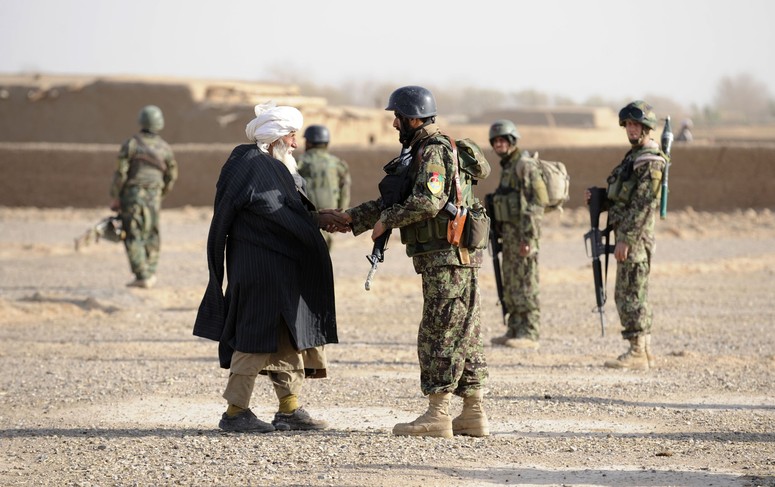In response to US claims that the Russian SSC-8 Screwdriver missile is a breach of the Intermediate-Range Nuclear Forces (INF) Treaty, Russia accuses the US of violating the treaty with its ground-launched variant of the Mk-41 Vertical Launching System, which the US has stationed in Romania as a component of the US anti-ballistic missile (ABM) defence shield. In its “Aegis Ashore” configuration, the Mk-41 is a shipborne launching system repurposed to propel ground-launched variants of the Tomahawk sea-launched cruise missile (SLCM). Vladimir Putin asserted at his last annual press conference “that Washington has already withdrawn from it [the treaty] de facto…It has deployed systems, allegedly ABM systems, in Romania…It has removed sea-launched Aegis launchers from warships and deployed them on the ground…these ABM systems’ missiles can be easily replaced with ordinary medium-range missiles.”
In addition to the Mk-41, Russia also faces the spectre of a new American intermediate-range ground-launched cruise missile (GLCM) proposed in the 2017 National Defence Authorization Act. Although a new GLCM is still only a line item in an appropriations bill, it is a far less ambiguous threat to Russia than the potentially dual-purpose ABM interceptor. The Russian Foreign Ministry asserts that the US is “seeking a pretext” to abrogate the treaty with the development of the new GLCM and vows to respond.
Moscow would perceive the deployment of a new theatre-range cruise missile in Europe as a direct threat, as the Soviet Union perceived Pershing IIs and GLCMs in the 1980s, but this time the missiles are closer to its borders. Invoking the Euromissile Crisis, retired Russian Major-General Vladimir Dvorkin, who served as an advisor during the INF Treaty negotiations, said of the ABM shield that “Russia would face a direct threat: the deployment of new missiles like Pershing 2 or Tomahawk in Europe — and much closer to our borders than during the 1980s — that could hit our territory even beyond the Ural Mountains.” Intermediate-range missiles have the potential to hit strategic targets in a matter of minutes. Pershing IIs in Western Europe aimed at Soviet targets were, in Mikhail Gorbachev’s words, akin to a “gun to the head.” Congressional calls for the US to bolster America’s nuclear forces in Europe to incentivize Russian compliance must sound eerily similar to the threat to deploy the Pershing II as part of the dual-track strategy NATO embarked upon after 1979.
Official thinking in Moscow appears to be informed by the view, held by some Soviet officials during the treaty negotiations, that the treaty amounts to one-way arms control against Russia. While the Kremlin did succeed through the treaty in eliminating from Europe two missile systems it feared — Pershing IIs and GLCMs — limits on intermediate-range missiles, Soviet Defence Minister Dmitry Ustinov explained in a 1982 edition of Pravda, meant the “unilateral disarmament” of the USSR. The Soviet theatre missile arsenal at the time of the INF Treaty negotiations consisted solely of land-based intermediate-range ballistic missiles (IRBMs), unlike the US arsenal. According to Russian Foreign Minister Sergei Lavrov, “when the treaty was signed, the Soviet Union had only ground-launched intermediate-range missiles, while the United States’ missiles were ground-, air-and sea-launched. By signing the treaty that outlawed and eliminated such ground-based missiles we disarmed ourselves to a large extent.”
Because Western Europe was in range of SS-20 Saber IRBMs stationed immediately east of the Urals, and SS-20s in Soviet Asia could be transported to locations within range of Western Europe, US negotiators successfully argued for the “zero option” — inclusion of all SS-20s regardless of their location in the vastness of the USSR. For the Kremlin, SS-20s installed in the Far East were vital to Soviet security vis-a-vis China. What’s more, the West succeeded in keeping British and French nuclear forces outside the treaty, over Moscow’s protestations, on the grounds that these were independent national deterrents, not NATO capabilities.
Geography places Russia at a unique disadvantage in relation to states on or near its borders with land-based intermediate-range missiles or the wherewithal to develop them. During Putin’s now infamous 2007 Munich Conference on Security Policy speech, he criticizing the treaty for its lack of “universal character,” noting that North Korea, South Korea, India, Iran, Pakistan and Israel possess missiles that would have been outlawed under the terms of the treaty. If indeed the SSC-8 is a violation of the treaty, the development and deployment of the missile is likely a response to the perceived asymmetry of missile power between Russia and other states. Putin framed the development of Russian air- and sea-launched intermediate-range missiles as a correction of the military imbalance. He explained that Russia would have been tempted to withdraw from the treaty already had it not made strides with the development of SLCMs like the 3M-54 Kalibr, launched with much fanfare from the Caspian Sea at targets in Syria in 2015. The SSC-8, which is believed to be a land-based variant of the Kalibr, may be a correction to address the capability gap. (There is a growing sense among US defence planners that the INF Treaty poses similar challenges to the American presence in East Asia vis-a-vis China’s IRBMs).
There was a time when both Russia and America worked together to urge the international community to multilateralize the INF Treaty. In 2007, on the occasion of the 20th anniversary of the treaty, the US and Russia issued a joint statement at the UN General Assembly calling on “all interested countries to discuss the possibility of imparting a global character to this important regime.” Moscow and Washington have since shifted away from joint entreaties in favour of mutual recriminations and threats.
The INF Treaty is now bound up with the ballistic missile defence dynamic in Europe and the absence of the limits the ABM Treaty imposed on anti-missile systems – an added complication for European security relations that will make managing the treaty more difficult. The rationale of the ABM Treaty was to mitigate the destabilizing effect of anti-missile systems — the more an adversary’s strategic capabilities are safeguarded by missile defences, the more states will feel compelled to develop countermeasures to pierce those defences. Russia is fielding countermeasures to check the US missile shield like new “ABM killer” intercontinental ballistic missiles (ICBMs), while also threatening to counter the ABM shield as an INF Treaty violation.
As Russia responds to perceived provocations and missile imbalances with new ICBMs and other countermeasures of its own, those countermeasures are, in turn, viewed as provocations by NATO members. One such tit-for-tat response to the ABM shield was the emplacement of a short-range ballistic missile, the Iskander-M, in the Kaliningrad Oblast, which borders Lithuania and Poland. Lithuanian President Dalia Grybauskaite calls the Iskander-M a threat to “half of all European countries” and Warsaw is responding to the presence of nuclear-capable Iskanders in Russia’s Baltic exclave with plans to purchase additional Patriot air defence systems from the US. The installation of another Aegis Ashore unit in Redzikowo, Poland, scheduled for 2020, will likely intensify the security dilemma in the region.
Taken together, these developments — the ABM shield in Romania and Poland, SSC-8 battalions and plans for a new American GLCM — all of which takes place against a backdrop of deteriorating security relations in Europe, add to the intractability of the problem of intermediate-range missiles and are sowing seeds for increasingly unstable missile politics of the sort Europe thought were behind it after the signature of the INF Treaty in 1987.
Photo: SS-20 Sabre intermediate-range ballistic missile (2016) via Credit: DmyTo via iStockPhoto.
Disclaimer: Any views or opinions expressed in articles are solely those of the authors
and do not necessarily represent the views of the NATO Association of Canada.




